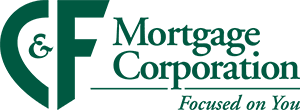There are many reasons for refinancing your home, many of which involve saving money on your monthly mortgage expenses. One such reason to refinance is to remove mortgage insurance from your loan, which has the potential to save you hundreds each month. Below, we’ll discuss how and why refinancing to eliminate mortgage insurance can be a good idea.
What is Mortgage Insurance?
When you purchase a home and obtain a mortgage, you’ll typically put down some amount of cash. While not all loan programs require a down payment, many do require buyers to put down at least 3% of the purchase price of the home. However, putting down less than 20% may require buyers to pay mortgage insurance as part of their monthly mortgage payment. Mortgage insurance is intended to protect the lender against the risk that a homeowner will stop paying their mortgage and remains in place until the homeowner has 20% equity in the home. At that point, you may request the removal of mortgage insurance from your loan. The FHA loan program, which allows buyers to put as little as 3.5% down, will require mortgage insurance premiums to be paid for the life of the loan. The process to remove mortgage insurance can be sped along with a refinance, as mentioned above.
What is a Refinance?
Similar to the process of obtaining your original mortgage, you have the option to take out a new loan to replace your existing one. If mortgage rates have decreased since you bought your home or if home values have increased significantly, it may be time to consider refinancing your home.
When you have more than 20% equity in your home with a conventional loan, you have an opportunity to eliminate monthly mortgage insurance. Refinancing from a government loan, such as an FHA loan, to a conventional loan can also help you get rid of mortgage insurance. When you choose this path, you have an opportunity to eliminate the mortgage insurance premiums, which can save you quite a bit over time. A refinance may also allow you to lower your rate and payment, access cash, or adjust your loan term.
When you refinance, your original mortgage is paid off and replaced with a new mortgage, with new terms and a new repayment schedule. In addition to taking advantage of a new interest rate, you can switch from a 30-year to a 15-year mortgage and vice versa. You can expect the refinance process to be similar to obtaining a traditional mortgage, in that you’ll apply with a lender, go through the underwriting and approval process and finally, attend closing for your newly refinanced loan.
How Do I Remove Mortgage Insurance?
The benefit of refinancing your home generally falls into the bucket of saving money on your mortgage or tapping into your equity to utilize the cash for large purchases and home improvements. One such way you can save money on your mortgage is by eliminating your mortgage insurance. If your home’s value has increased enough when you refinance and you now have over 20% equity in the home – the mortgage insurance will no longer be required. This alone can save you hundreds each month, and if your new interest rate is lower, you’ll see a pretty significant savings in your monthly mortgage payment!
It is important to note that refinancing is like a traditional mortgage in that there are certain closing costs and fees associated with the process, so it’s a good idea to consult with your lender to calculate the savings versus the cost. In a low interest rate environment, more times than not, refinancing will be favorable – but it’s always a good idea to ensure it makes sense for your specific circumstances before moving forward!
If you’ve been considering a refinance, our team of local industry experts is here to help, every step of the way. Get in touch with C&F Mortgage today and see if refinancing is a good choice for you!

